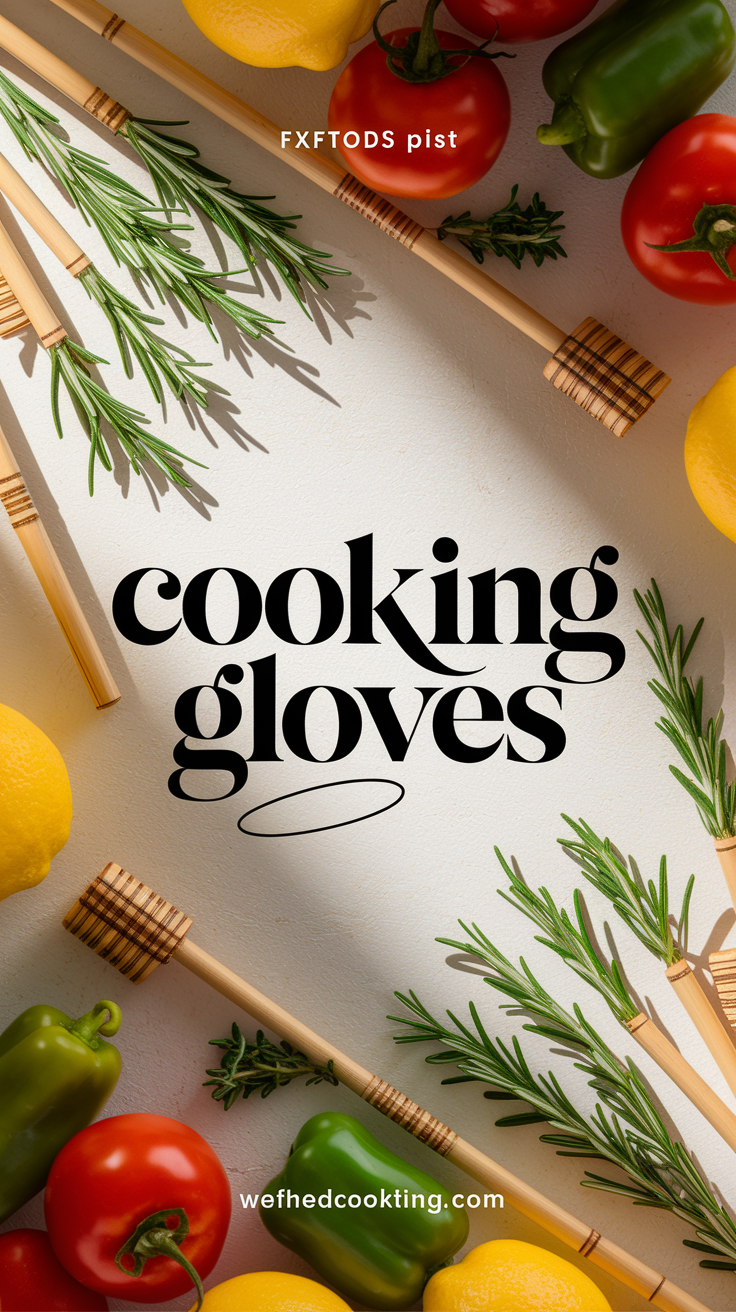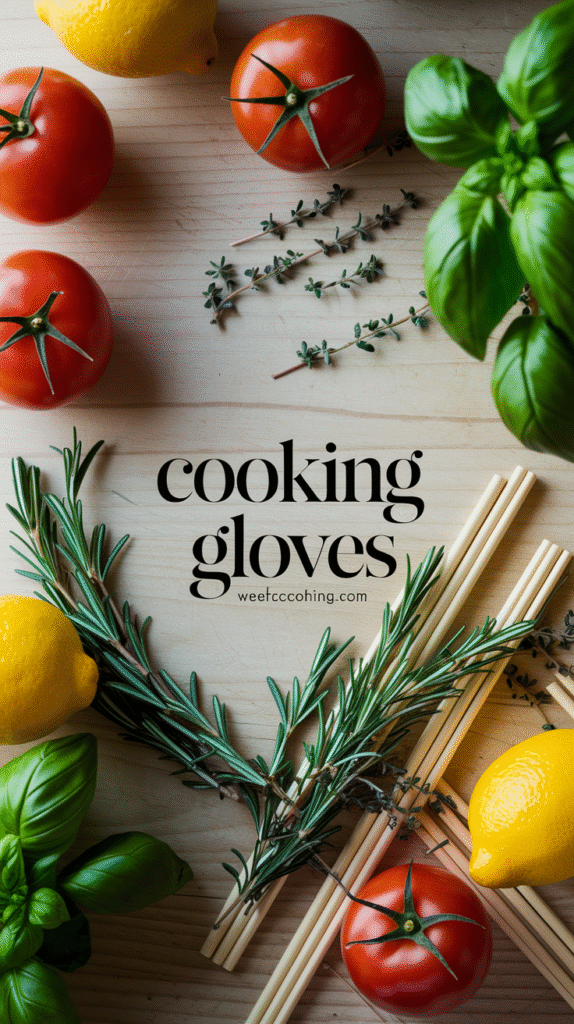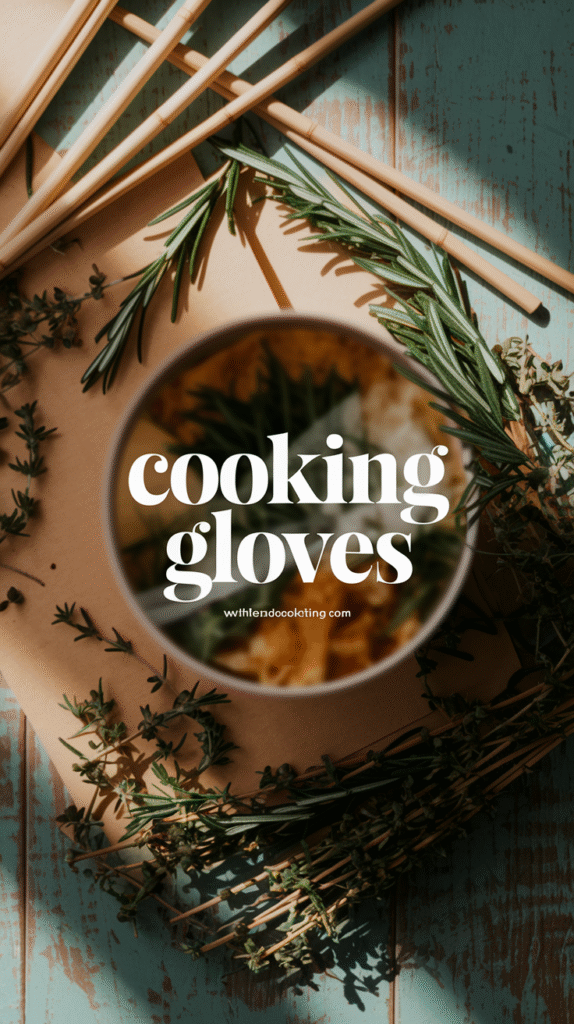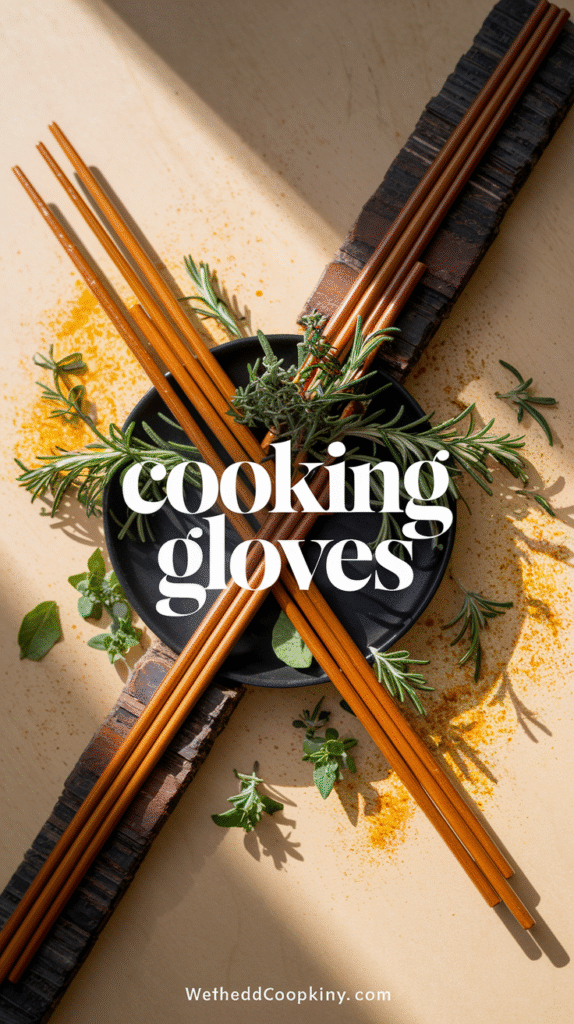When it comes to safely navigating your cooking adventures, cooking gloves are indispensable tools in any kitchen. These gloves act as a protective barrier against various hazards, enabling you to handle hot items without fear of burns or injuries. In this article, we will explore the various benefits of cooking gloves and how they contribute to kitchen safety.
One of the primary benefits of using cooking gloves is their ability to protect against heat. Whether you’re pulling a tray of cookies from the oven or handling a hot pot on the stove, cooking gloves ensure that you can do so without risking burns. Available in materials such as silicone, cotton, and Kevlar, each type offers unique advantages that cater to specific cooking needs.
Here’s a look at some common types of cooking gloves and their features:
- Silicone Gloves: These are heat-resistant and often waterproof. They provide excellent grip, making them ideal for handling slick or heavy items.
- Cotton Gloves: While they may not be as heat-resistant as silicone, they are comfortable and breathable. They are perfect for general kitchen tasks but should not be used for handling extremely hot items.
- Kevlar Gloves: Designed for high-temperature cooking tasks, these gloves offer exceptional heat resistance and cut protection. They are a favorite among professional chefs.
In addition to protecting against burns, cooking gloves can also prevent cuts and abrasions. These gloves can shield your hands from sharp edges, whether it’s from knives, grater blades, or even the skins of certain vegetables. By reducing the risk of cuts, you can cook more confidently and efficiently.
Another crucial aspect of cooking gloves is their role in maintaining hygiene. When you’re working with raw meat or other potentially hazardous food items, wearing cooking gloves can minimize the risk of cross-contamination. This is especially important for protecting yourself and your family from foodborne illnesses. Always remember to change gloves or wash them appropriately between handling different ingredients.
The roles of cooking gloves extend beyond safety and hygiene; they can also enhance your kitchen experience. Imagine preparing a lovely dinner without the constant worry of burning your hands or dropping slippery items. Cooking gloves provide peace of mind, allowing you to focus on your culinary creations.
Here are some tips on how to choose the right cooking gloves for your needs:
- Material: Consider what material suits your cooking style. If you work with very hot items often, silicone or Kevlar might be ideal.
- Size and Fit: Ensure the gloves fit snugly but not too tightly. This will allow for maximum dexterity while handling food.
- Ease of Cleaning: Check if the gloves are machine washable or can be easily cleaned by hand; this can make a big difference in maintenance.
- Grip: Look for gloves that have a textured surface for enhanced grip, especially when handling heavier pots or pans.
It’s essential to replace your cooking gloves periodically. Over time, gloves can wear out, lose their protective qualities, and even harbor bacteria if not cleaned properly. Always keep an eye on the wear and tear of your gloves to maintain optimal safety in your kitchen.
Additionally, buying high-quality cooking gloves from reputable brands can ensure that you’re investing in products that will last and provide great safety. For more detailed information on selecting cooking gloves, you can visit NCBI for insights on kitchen safety practices.
Ultimately, using cooking gloves makes your cooking experience more enjoyable and safe. From preventing burns to keeping your hands clean and cuts-free, these gloves are a vital part of any kitchen. Whether you’re a professional chef or a home cook, don’t overlook the importance of having the right cooking gloves at your side.
Remember, your safety in the kitchen is worth investing in. For a fantastic selection of cooking gloves that combine quality and efficiency, check out WebstaurantStore.
Different Types of Cooking Gloves and Their Uses
Cooking gloves play an essential role in ensuring safety and comfort in the kitchen. They protect your hands from extreme temperatures and prevent burns or injuries while handling hot pots, pans, and other kitchenware. Understanding the different types of cooking gloves available can help you choose the best option for your culinary needs.
Silicone Cooking Gloves
Silicone cooking gloves have gained immense popularity due to their heat resistance and flexibility. These gloves can withstand temperatures up to 500°F (260°C), making them perfect for grilling and baking. Unlike traditional oven mitts, silicone gloves provide a non-slip grip, enhancing your ability to hold hot items securely.
- Heat Resistant: Up to 500°F (260°C).
- Flexible: Allows for easy movement.
- Non-Slip: Ensures a strong grip.
- Easy to Clean: Often dishwasher safe.
Leather Cooking Gloves
Leather cooking gloves are another excellent option, especially for outdoor cooking and grilling. They offer durability and protection against high temperatures. While leather gloves might not be as heat-resistant as silicone, their thick material provides an extra layer of protection against flames and sparks.
- Durability: Made from high-quality leather.
- Flame Resistant: Provides added protection.
- Comfortable: Often crafted with an ergonomic design.
- Long-Lasting: Can withstand wear and tear.
Fabric Oven Mitts
Fabric oven mitts are often a staple in most kitchens. They are made of quilted cotton or similar materials and offer good insulation against heat. Although not as heat-resistant as silicone or leather, fabric mitts still provide adequate protection for most baking tasks.
- Insulation: Keeps hands safe from hot items.
- Variety of Designs: Available in numerous colors and patterns.
- Easy to Store: Typically compact and flexible.
- Affordable: Generally lower in price than other options.
Grilling Gloves
Grilling gloves are specialized gloves designed for outdoor cooking. These gloves often combine materials like silicone or leather with fabric to offer optimal heat resistance, flexibility, and grip. They are ideal for managing hot grill grates or food straight from the flame.
- Enhanced Heat Resistance: Suitable for high temperatures.
- Enhanced Grip: Specially designed surfaces for holding hot tools.
- Versatile: Can be used for both grilling and kitchen work.
Disposable Cooking Gloves
Disposable cooking gloves are common in professional kitchens, but they’re handy for home cooks too. Made of thin plastic, they protect food from contamination and keep your hands clean while preparing ingredients. While not ideal for hot items, they are excellent for tasks like marinating meats or preparing vegetables.
- Hygienic: Reduces risk of foodborne illnesses.
- Convenient: Easy to put on and remove.
- Multi-use: Great for a variety of cooking tasks.
Choosing the Right Gloves
When selecting cooking gloves, consider the following factors:
- Usage: Determine what you will primarily use the gloves for—baking, grilling, or food prep.
- Heat Resistance: Ensure the gloves can handle the temperatures you’ll be working with.
- Cleaning: Think about how easy they are to wash and maintain.
- Fit: A snug fit is crucial for better grip and control.
Each type of cooking glove has its unique strengths, so it’s worth investing in a few different kinds to cover your kitchen needs. For more details on kitchen safety and cooking accessories, check out KitchenAid and Williams Sonoma.
Finding the right cooking gloves enhances your kitchen experience while keeping your hands safe from burns and injuries. With various options available, make an informed choice for your cooking adventures.
How to Choose the Right Cooking Gloves for Your Needs
When it comes to cooking, safety is just as important as flavor. Using the right cooking gloves can protect your hands from burns, cuts, and strains. With so many types available on the market, how do you choose the best ones for your specific needs? Let’s break it down to make your decision easier.
Understand the Types of Cooking Gloves
Cooking gloves come in various materials, each designed for different tasks. Here’s a quick overview:
- Silicone Gloves: Excellent for gripping, silicone gloves are heat-resistant and easy to clean. They’re perfect for handling hot pots or baking sheets.
- Leather Gloves: These provide excellent protection against heat and cuts. Ideal for grilling or barbecuing, they offer durability but require special care.
- Fabric Gloves: Usually oven mitts, these gloves are great for everyday kitchen use. They provide warmth and protection but may not be as heat-resistant as others.
- Disposable Gloves: Great for maintaining hygiene, especially when handling raw meat or food prep. While not heat-resistant, they help keep your hands clean.
Consider the Heat Resistance
When selecting cooking gloves, it’s crucial to consider how much heat they can withstand. Look for gloves with a high heat resistance rating, often measured in degrees Fahrenheit or Celsius. Here’s a simple guide:
| Type of Gloves | Heat Resistance | Best Use |
|---|---|---|
| Silicone Gloves | Up to 450°F (232°C) | Handling hot kitchenware |
| Leather Gloves | Up to 600°F (316°C) | Grilling and barbecuing |
| Fabric Gloves | Up to 350°F (177°C) | Oven use |
| Disposable Gloves | N/A | Hygienic food prep |
Assess Grip and Comfort
You want cooking gloves that feel comfortable and provide a solid grip. A secure grip is essential when handling hot or heavy items. Silicone and textured fabrics often provide the best grip. Before making a purchase, consider the following:
- Try on the gloves, if possible. Ensure they fit snugly but aren’t too tight.
- Assess the flexibility—but don’t sacrifice protection for comfort.
- Look for gloves with a non-slip surface to prevent accidents.
Easy Maintenance and Care
The ease of cleaning your cooking gloves can greatly impact your choice. Silicone gloves can often be cleaned under running water or in the dishwasher, while cloth options may need regular washing. Consider how much maintenance you’re willing to do:
- Silicone Gloves: Dishwasher safe and easy to wipe clean.
- Leather Gloves: Require special cleaning solutions to maintain quality.
- Fabric Gloves: Look for machine-washable options for convenience.
Cost vs. Quality
Before you make a purchase, think about your budget. While you may find cheaper options, investing in high-quality cooking gloves can be safer and more durable over time. Compare prices and reviews online, such as on Consumer Reports, to help determine the best value for your needs.
Special Features to Look For
Some cooking gloves come with additional features that can enhance their usability:
- Long Sleeves: Some gloves extend up the forearm, providing better protection when handling hot items from the grill or oven.
- Water Resistance: If you plan to work with liquids, choose gloves that repel water.
- Color Coding: Consider using different colored gloves for raw meat and fresh produce to prevent cross-contamination.
Choosing the right cooking gloves involves considering your needs, preferences, and how you plan to use them in the kitchen. Make sure to evaluate your cooking habits and the most common tasks you perform. By selecting gloves that best align with your needs, you can work more safely and confidently in your kitchen.
For more details on cooking gloves and safety tips, visit FoodSafety.gov or check out Epicurious for additional resources.
Caring for Your Cooking Gloves: Tips for Longevity
Cooking gloves are essential tools in the kitchen, providing protection while you handle hot dishes, sharp utensils, and various ingredients. To get the most out of your cooking gloves, proper care and maintenance can significantly prolong their lifespan. Here are some effective tips to help you keep your cooking gloves in great condition.
Choosing the Right Gloves
The longevity of your cooking gloves begins with making the right choice. Here are some factors to consider when selecting your gloves:
- Material: Silicone gloves are great for heat resistance, while cotton gloves offer comfort and flexibility. Choose based on your cooking needs.
- Size: Ensure that your gloves fit well. Oversized gloves may slip off, while tight ones can restrict movement.
- Brand Reputation: Opt for brands known for their quality, like Easy Home Cooking that focus on durable materials.
Washing Your Cooking Gloves
Proper cleaning of your cooking gloves not only ensures hygiene but also maintains their appearance and functionality:
- Silicone Gloves: These can be wiped down easily with warm, soapy water. For stubborn stains, you can use a sponge. Rinse in hot water and let them air dry.
- Cotton Gloves: Check the label for washing instructions. Most cotton gloves are machine washable. Avoid using bleach, which can deteriorate the fabric over time.
- Storage: Store your gloves in a dry place. Avoid folding or crumpling them for long periods; this can lead to permanent creases.
Avoiding Damage
To extend the life of your cooking gloves, you should also be aware of activities that may cause damage:
- Sharp Objects: Avoid using your gloves as a cutting mat. Sharp knives or kitchen gadgets can puncture or cut through the material.
- High Temperatures: Even though many gloves are heat-resistant, exposing them to extremely high temperatures for extended periods can still cause damage. Always double-check their limits.
- Avoiding Chemicals: Keep your gloves away from harsh chemicals and cleaners that can wear down the material.
When to Replace Your Cooking Gloves
Even with the best care, your cooking gloves will eventually need replacing. Here are signs to look out for:
- Visible Wear: Cracks or tears indicate that the gloves are no longer safe to use.
- Odor: Persistent odors that do not wash out can suggest bacteria buildup. Consider replacing them if cleaning fails to eliminate the smell.
- Poor Fit: If gloves have lost elasticity or become stretched out, it may be time for a new pair for safe handling.
Additional Tips for Glove Longevity
Consider the following tips to enhance the durability of your cooking gloves:
- Rotate Your Gloves: If you have multiple pairs, rotate their use. This ensures even wear and tear, allowing each pair to rest.
- Avoid Overusing: While tempting, avoid using your gloves for non-cooking tasks, which can lead to reduced lifespan.
- Check for Heat Resistance: Always verify the temperature limits of your gloves, which can often be found on the packaging or the company website.
By following these effective tips for caring for your cooking gloves, you can enjoy their benefits while ensuring safety and longevity in your kitchen. Well-maintained gloves not only provide protection but also enhance your cooking experience. For further information on selecting high-quality cooking gloves, visit Cooking Light.
Remember that your kitchen tools reflect your cooking habits, and investing time in their care reaps benefits in both safety and usability.
Innovative Features of Modern Cooking Gloves to Enhance Your Cooking Experience
In the world of culinary arts, having the right tools can make all the difference. When it comes to safety and efficiency, modern cooking gloves have become an essential item in every kitchen. These gloves offer innovative features designed to enhance your cooking experience while ensuring protection against burns, cuts, and slips. Let’s explore some of the standout features that have transformed standard cooking gloves into advanced kitchen companions.
Heat Resistance
One of the primary functions of cooking gloves is heat resistance. Modern gloves are made using advanced materials like silicone and aramid fibers, which can withstand high temperatures. Many gloves can protect your hands from temperatures up to 500°F or more. This feature is particularly beneficial when handling hot pots, pans, and grilling appliances. With these gloves, you can confidently reach into an oven or move sizzling food without worrying about burns.
Non-Slip Grip
Another revolutionary aspect of contemporary cooking gloves is their non-slip grip. Textured surfaces on the fingers and palms enhance your hold on slippery cookware and utensils. This feature is crucial for safety, as it minimizes the risk of accidents caused by dropping hot items. Whether you’re flipping a steak on the grill or transferring a casserole from the oven, a secure grip helps you maintain control.
Flexible and Comfortable Design
Gone are the days of stiff and bulky gloves that limit movement. Today’s cooking gloves are designed with a focus on flexibility and comfort. Many options feature a snug fit that allows for ease of movement, making it easier to perform detailed tasks, such as chopping vegetables or twisting lids off jars. This flexibility not only enhances your cooking experience but also reduces hand fatigue during prolonged cooking sessions.
Easy to Clean
Keeping your cooking gloves clean is essential for food safety. Modern designs are often machine washable or can be wiped down easily with a sponge. Silicone gloves, in particular, are resistant to stains and odors, making them a popular choice among home chefs. This makes maintaining hygiene effortless, allowing you to focus more on your cooking rather than worrying about washing your equipment.
Durability and Longevity
Investing in high-quality cooking gloves means choosing durability. Many gloves are constructed to withstand wear and tear, ensuring they last longer than cheaper alternatives. Look for gloves with reinforced seams and materials designed for prolonged use. This ensures that your gloves remain functional over time, making them a worthwhile addition to your kitchen.
Multi-Purpose Use
Modern cooking gloves are not limited to just oven use. Their versatility allows you to employ them in various scenarios, including:
- Grilling outdoors
- Cooking on the stovetop
- Handling hot dishes
- Even potting plants or working with hot surfaces!
This adaptability makes them an essential tool not only for cooking but also for general kitchen tasks, gardening, and other activities that require protection from heat or sharp objects.
Stylish Designs
Today’s cooking gloves come in a range of attractive colors and designs, allowing you to express your personal style while working in the kitchen. From vibrant hues to chic patterns, you can find gloves that match your kitchen decor or suit your personality. This fun aspect adds a touch of flair to your culinary workspace and helps make cooking an enjoyable experience.
Smart Features
Some modern cooking gloves are even incorporating smart technology. This includes features like heat sensors that alert you when temperatures are too high, which can be particularly useful for novice cooks. Brands are innovating to provide smart cooking solutions that go beyond traditional glove functions.
With these innovative features, modern cooking gloves enhance your culinary adventures by providing safety, comfort, and versatility. These tools help you stay protected while boosting your cooking confidence and efficiency. Whether you’re a novice home cook or an experienced chef, investing in a good pair of cooking gloves can elevate your kitchen experience.
For more information on cooking gloves and choosing the best option for your kitchen needs, visit Food Network or explore product reviews at Consumer Reports.
Conclusion
Ensuring safety and efficiency in the kitchen is essential for both seasoned chefs and cooking enthusiasts alike, and cooking gloves play a crucial role in achieving this. By understanding the importance of these protective tools, you can minimize the risk of burns, cuts, and other injuries while preparing your favorite meals. Familiarity with the various types of cooking gloves enables you to make informed choices, whether you need silicone gloves for handling hot items or leather gloves for grilling.
Choosing the right cooking gloves tailored to your specific needs is a straightforward process. Consider factors such as material, size, and grip. Remember, the goal is to find gloves that feel comfortable and provide the safety features you require while cooking. Longevity is equally important; proper care can significantly extend the lifespan of your gloves. Regular cleaning and storage tips ensure that they remain in top condition for all your culinary adventures.
Modern cooking gloves come packed with innovative features designed to enhance your cooking experience further. From heat resistance to non-slip grips, these advancements can help take your skills to the next level. Investing in high-quality cooking gloves not only enhances your safety but also boosts your confidence in the kitchen. Armed with the right information, you now have the tools to choose, care for, and fully enjoy the benefits of cooking gloves, making every culinary endeavor a safer and more enjoyable one.







Leave a Reply